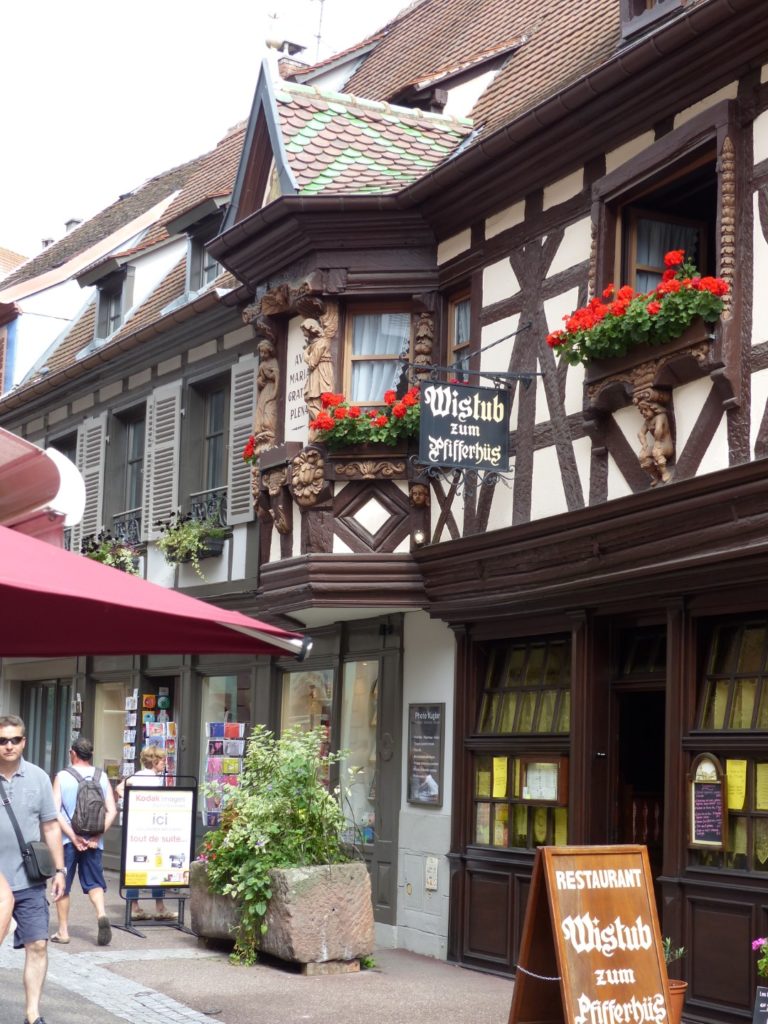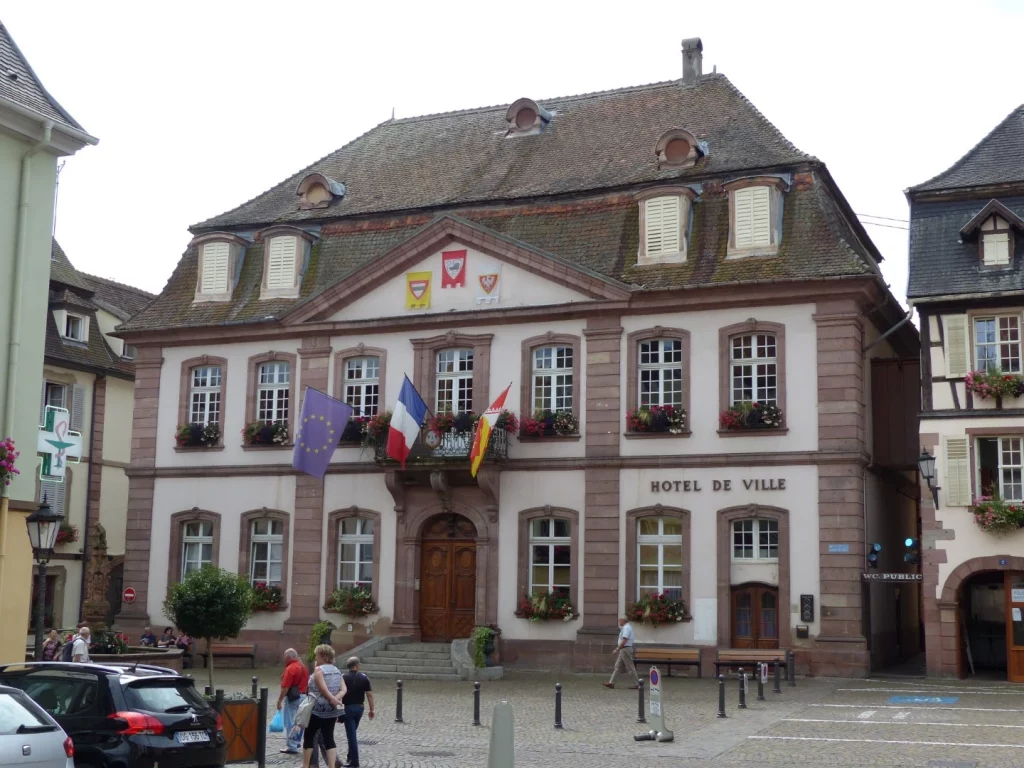Visit Ribeauvillé: the essential places to see and do
Ribeauvillé, small medieval town north of Colmar. Between vineyards and mountains, in the Middle Ages, the city was the seat of the Lordship of the Ribeaupierre family (hence the name of the town of Ribeauvillé).
The Ribeaupierres had three castles built, the ruins of which still majestically dominate the city and the surrounding hills today.
All three are accessible by a hiking trail on the mountainside:
- St-Ulrich Castle, (the oldest and most important of the 3 castles)
- Girsberg Castle,
- Château Haut-Ribeaupierre, (as its name suggests, the highest of the 3 castles).
La Pfifferhüss :

Also called “Auberge des Ménétriers”, it is one of the most beautiful half-timbered houses in Ribeauvillé. The beautiful loggia above the door dates from 1663 and bears the inscription “Ave Maria Gracia Plena” in reference to the Dusenbach pilgrimage dedicated to the Virgin Mary. The two wooden statues which stand on the loggia represent the Annunciation. The Brotherhood of Menetriers, mentioned for the first time in 1390, operated under the protection of the lords of Ribeauvillé.
The Town Hall and the Butchers’ Tower

The Town Hall Square marks the limit between the lower town and the upper town of Ribeauvillé, linked by an impressive fortified gate. It is also known for its beautiful Alsace houses and its beautiful buildings such as the town hall.
The Town Hall, built in 1773, houses an interesting collection of gold plates and silver goblets from the 15th to the 17th century, offered to the Town by the lords of Ribeaupierre.
The Butchers’ Tower separates the Upper Town from the Middle Town. It owes its name to the slaughterhouse and the butchers’ stalls which were located right next to it. The lowest part of the tower was built in 1290 and in 1536 it was decided to increase it to 29 meters. Often threatened with destruction, it has become the emblem of Ribeauvillé. On the same square, opposite the Town Hall, stands the church of the Convent of the Augustines, today the church of the Sisters of “Divine Providence”. It is decorated with a canonical sundial in the corner of the sacristy (rue des Frères Mertian).
The three castles of Ribeauvillé:
Of its medieval fortifications, the town still retains today part of its rampart wall and some of its defensive towers, including the “Butchers’ Tower” (13th century, rebuilt in the 18th century), which owes its name to the corporation of Butchers (responsible, in the event of an attack, of defending the city from this tower). A very pleasant 3 hour walk.
The Grand’rue and its picturesque neighborhoods, lined with abundantly flowered buildings (from the 15th to the 18th century), are dotted with squares decorated with Renaissance-style fountains.
Sainte-Catherine Chapel:
Along the Grand Rue, the small church dedicated to Saint Catherine is mentioned for the first time in 1346 as the chapel of the seigneurial hospital. It served as a burial place for the Ribeaupierre dynasty, whose coat of arms is still visible on the Gothic-style arch above the choir gallery. Today, the chapel is an exhibition hall.
Place de la Sinne:
This beautiful little square is lined with beautiful houses like the Auberge du Soleil which was once the meeting place for local musicians and the Auberge du Mouton, a former coaching inn. In the middle of the square is the fountain built by the native André Friedrich in 1862 and which personifies Ribeauvillé, its agriculture and its industry. In the past, the fountain was used as a city gauge (zinnen in Alsatian dialect) hence the name of the square (Sinn).
Republic Square:
Marking the limit of Ribeauvillé, Place de la République and its statue dating from 1576 are accessible from Grand’Rue. Just before arriving at the square, the Grand’Rue offers a picturesque view of the narrow canal which runs along the old street. From the square, there is a beautiful view of the ruined St. Ulrich Castle, located on the top of a hill.
The Ribeauvillé Christmas market:

The Ribeauvillé Christmas market is undoubtedly the most chic of those found on the Alsace Wine Route. Visitors are immersed in a joyful medieval atmosphere where exhibitors and organizers have dressed in fanciful medieval costumes. There are handcrafted items such as candles, Advent wreaths and nativity scenes, while traditional food and drinks are served: roast wild boar, beer and wine, as well as local sweets. This market is a real spectacle for young and old: stilt walkers, jugglers, fire eaters and musicians stroll through the medieval streets of Ribeauvillé for the greatest pleasure of all.
How to get to Ribeauvillé from our vacation rentals?
From the gîtes, Ribeauvillé is accessible by car – approximately 5 minutes.
On foot through the vineyards following a marked path starting from the Cave Coopérative.
